Le Village d’Art de Jirye (지례예술촌)
.0M 2024-07-08
769, Bakgok-ri, Imdong-myeon, Andong-si, Gyeongsangbuk-do
+82-54-852-1913
Le village d’art de Jirye à Andong est le l’endroit par excellence où vous pourrez vivre une experience de la culture coréenne traditionnelle. Le site a été désigné comme village artistique en 1990. Le site propose de nombreuses activités liées aux traditions en Corée et à l'artisanat.
Suaedang [Korea Quality] / 안동 수애당 [한국관광 품질인증]
5.4Km 2023-04-13
1714-11, Sugogyonggye-ro Imdong-myeon, Andong-si, Gyeongsangbuk-do
+82-54-822-6661
'Suaedang Traditional House was built by Ryu Jin-geol, also known by his pen-name of Suae, in 1939. This hanok-style house consists of three buildings that measure 29-kan (a traditional measurement that corresponds to the space between two columns) in total.
The main room, or jeongchim (7-kan at front and 2-kan at sides), has a half-hipped roof, and forms a‘ㄱ’-shape with the storeroom (10-kan at front), which also has a half-hipped roof. Originally located at 612 Sugok-dong, Andong-si, the house was relocated from a slight slope to a flat piece of land due to the construction of Imha Dam in 1987. Consequently, the Jeongchim was rebuilt at a lower level than before.
The Suaedang was renovated by modernizing the old-style facilities including the kitchen, toilets, and washroom without changing their external features, while the rooms and daecheongmaru (main floored room) were decorated with red clay and natural paint. Suaedang, with its beautiful panoramic view of the lake, was designated as Gyeongsangbuk-do Cultural Property No. 56.
Jeongjae Head House [Korea Quality] / 정재종택 [한국관광 품질인증]
6.3Km 2023-04-13
경상북도 안동시 임동면 경동로 2661-8
+82-10-8590-0625
Boasting more than 300 years of tradition, Jeongjae Traditional House is the head house of Ryu Chi-myeong (pen-name: Jeongjae), who inherited the study of Togye Yi Hwang (1501-1570), one of the two most prominent Korean Confucian scholars of Joseon. The old house features the characteristic construction elements of a Joseon hanok, including the stylobate, wooden pillars, toenmaru (the narrow wooden porch running along the outside of the building), tiled roof, and other structures, and commands an open view of Imha Lake. The house was originally built by Ryu Gwan-hyeon, the great-great-grandfather of Ryu Chi-myeong, in 1735 (the 11th year of the reign of King Yeongjo of Joseon) in the village of Handeul in Imdong-myeon, Andong-si, Gyeongsangbuk-do, but it was relocated to the foot of Guamsan Mountain in 1987 when Imha Dam was built and the surrounding area was submerged as a result. The house consists of the daemunchae (gate building), jeongchim (a ‘ㅁ’-shaped house with a tiled roof), haengnangchae (servants’ quarters), a shrine, and a pavilion. The sarangchae (men’s quarters) is clearly visible, while the anchae (women’s quarters) is concealed within the house. The sarangchae has a sarangmaru (wooden floor), a large sarangbang room, a small sarangbang room, and there is a small maru between the two rooms. The buildings of the sarangchae and anchae are clearly divided into segregated spaces for men and women according to Confucian tradition. The anchae has a daecheongmaru (large wooden floor) in the middle; a main room, kitchen, and toilet on the right; and a numaru (upper floor) and sangbang (upper room) on the left. The small side door of the main gate links to the door by which to enter the anchae, which has a small vegetable garden. Manujeong Pavilion (Gyeongsangbuk-do Cultural Heritage Material No. 37) is a half-hipped roof building with single-layered eaves located on the left side of the house outside the main gate. It is the place where Ryu Chi-myeong used to teach his students, and consists of a large maru and a guest room. The pavilion is also surrounded by the beautiful scenery of Imha Lake, mountains, and chestnut trees. Jeongjae Traditional House provides two special experience programs: Making Songhwaju, which is the Ryu family’s home-brewed liquor (15 to 18 degrees) made with rice, glutinous rice, yeast, pine needles, and chrysanthemums, led by the owner’s wife (Intangible Cultural Asset No. 20); and Making Tarak, which is a fermented milk drink that has been made by the Ryu’s family for some 500 years. As the recipe for making Tarak is relatively simple, and uses yeast that is usually used to make raw rice wine like Makgeolli, people can easily make it at home. The house also runs a traditional music program designed to show participants how to play the gayageum (Korean zither with twelve strings) and sing Korean folk songs, and stages small concerts.
Imhaho Gisa Sikdang(임하호기사님식당)
6.9Km 2021-04-09
8, Seonchakjang-gil, Andong-si, Gyeongsangbuk-do
+82-54-822-4929
There are a variety of side dishes, so you can enjoy different foods. This Korean dishes restaurant is located in Andong-si, Gyeongsangbuk-do. The representative menu is kimchi stew.
Oryuheon House [Korea Quality] / 오류헌 [한국관광 품질인증/Korea Quality]
7.5Km 2023-04-13
18-15, Gireumaje-gil, Andong-si, Gyeongsangbuk-do
Oryuheon House, located near Imhaho Lake in Andong, Gyeongsangbuk-do, offers a chance to stay in a historic house from the Joseon period. The house, also known as Mogwa House, was built by Kim Won-jung, the third son of Sukjong-era rector of the National Academy Kim Bang-geol, when he formed a family of his own in 1678. It was designated as the National Folk Cultural Heritage No. 184. The door’s wooden frame and the open floor space exemplify the beauty of the literati house of the Joseon period, while the sarangchae (men’s quarters) and daemunchae (gate quarters) showcase the sophisticated architecture of the era. Anchae (women’s quarters) retains its original appearance, while the sarangchae was rebuilt in 1920. The construction of the Imha Dam in 1990 resulted in the house’s relocation to its present location.
The owner of the house resides in anchae and sarangchae. Guests have access to a space that includes a 2-kan room, which can accommodate up to 4, an open floor space, and a bathroom. Cooking is prohibited in the house, but guests can make use of a grill located on a small yard reserved for the guests. Korean-style breakfast, including menus like chicken porridge or lotus leaf rice, are offered free of charge in the morning. Nearby sights include the water sports activities in Imhaho Lake, Manhyujeong Pavilion, Hahoe Village, and Dosanseowon Confucian Academy.
Cheonji Sikdang (천지식당)
7.7Km 2021-03-24
90, Utjangteo-gil, Andong-si, Gyeongsangbuk-do
+82-54-822-7008
You can eat maeuntang (fish stew) made with fresh freshwater fish. This Korean dishes restaurant is located in Andong-si, Gyeongsangbuk-do. The representative menu is spicy freshwater fish stew.
Maison Sanam
8.5Km 2024-12-17
26 Jungdong 2-gil, Pacheon-myeon, Cheongson-gun, Gyeongsangbuk-do
La maison Sanam, située à Cheongsong-gun dans le village de Pacheon-myeon, a été bâtie au XVIIIème siècle par Shin Chi-hak du clan Shin de Jangjeol-dong à Pyeongsan. Celui-ci avait huit frères, mais les maisons de six d’entre eux furent brûlées durant la guerre, et il ne resta plus que la sienne et celle de son frère aîné. Sa structure carrée est tout à fait caractéristique du Nord du Gyeongsanbuk-do. Elle a été enregistrée comme Trésor culturel du Gyeongsangbuk-do n° 340.
Maison Seobyeokgotaek (서벽고택)
8.5Km 2021-11-01
22-2, Jungdeul 2-gil, Pacheon-myeon, Cheongsong-song, Gyeongsangbuk-do
+82-54-870-6247
Située dans le village clanique des Shin de Pyeongsan à Jungpyeong-dong, la maison Seobyeok a été fondée à l’origine lorsque Han-chang Shin, un lettré de la fin de la dynastie Joseon, se maria et quitta la maison de ses parents. La maison fut agrandie par Chi-gu Shin en 1739 (15ème année du règne du roi Yeongjo). Le nom de la maison provient du nom de plume de Shin, et possède une surface de 6 pièces à l’avant et 4 pièces sur le côté, ce qui était une structure répandue sous la dynastie Joseon. La maison a été désignée Trésor folklorique du Gyeongsanbuk-do n° 101 le 30 novembre 1993.
Maison principale de Pansagongpa, branche du clan Shin de Pyeongsan (청송 평산신씨 판사공파 종택과 분가 고택)
8.6Km 2021-10-14
16, Jungdeul 2(i)-gil, Pacheon-myeon, Cheongsong-gun, Gyeongsangbuk-do
+82-54-870-6247
Située dans le comté de Cheongdong-gun, dans la province du Gyeongsangbuk-do, Pyeongsansinssi Pansagongpa Jongtaek est la demeure principale de la noble famille Shin de Pyeongsan. La maison a été bâtie par Shin Han-Tae durant le règne du roi Sukjong (1674-1720) de la dynastie Joseon. Et tout au long des siècles, depuis sa construction, la maison a abrité les descendants de Shin, Deuk-Cheong, le 15ème petit-fils aîné du général, Shin Sung-Gyem. La maison possède toutes les caractéristiques d’une demeure des classes aisées de la dynastie Joseon, avec des bâtiments rectangulaires entourant une cour centrale. Le domaine se compose de la Soteuldaemun (haute porte), du Haengrangchae (quartiers des serviteurs situés près de la porte), du Gotgan (grenier pour stocker le grain et d’autres objets), de l’Anchae (quartiers des femmes) et d’un pavillon.
Dans le même village se trouve d’autres maisons du clan Shin : la Seobyeok Gotaek et la Sanam Gotaek. L’entrée du village est protégée par d’épaisses pinèdes et par la rivière Yonjeconcheon, affluent du fleuve Nakdonggang, tous deux formant un magnifique cadre naturel à cette région riche en histoire.
Chalbanggong Head House [Korea Quality] / 찰방공종택 [한국관광 품질인증]
10.5Km 2020-09-10
23-8, Songsogotaek-gil Pacheon-myeon, Cheongsong-gun, Gyeongsangbuk-do
+82-54-873-6502, +82-10-9502-7611
The Chalbanggong Head House is a resting place in nature that is open to everyone. The house was built in 1933 as the head house of Chalbanggong Shim Dang, a 9th-generation descendant of Akeungong from Cheongsong Shim’s Family. The place was also used as a village school and is designated as local cultural heritage no. 13. The structure of the house is shaped like the Korean alphabet "ㄷ". The fact that the gate of the house is facing north is very unusual. The house is positioned next to the Songso Old House, which has 99 rooms, and is composed of Ondol rooms heated by firewood as well as a wide yard and a vegetable garden. The place provides a comfortable resting space for those who want to enjoy the atmosphere of a traditional Korean-style house that they cannot easily see in urban areas. The rooms are papered with traditional Korean paper and equipped with beddings. The house is located in a region that is so quiet you can barely hear a thing except the sound of birds and wind. There is an ancestral shrine in the head house that looks just like a warm grandma’s house.
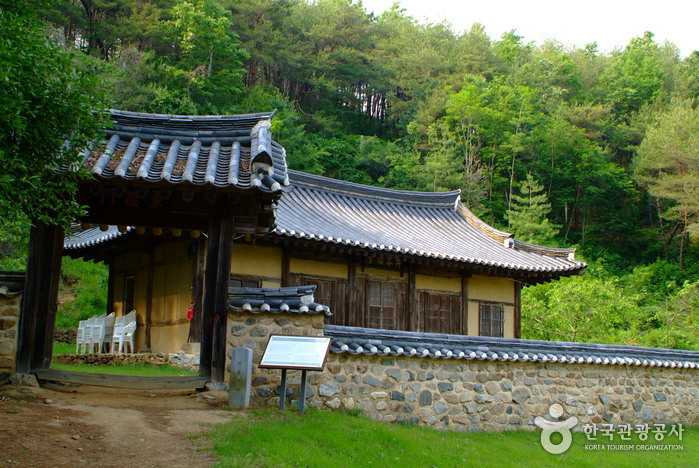
![Suaedang [Korea Quality] / 안동 수애당 [한국관광 품질인증]](http://tong.visitkorea.or.kr/cms/resource/88/2528888_image2_1.jpg)
![Jeongjae Head House [Korea Quality] / 정재종택 [한국관광 품질인증]](http://tong.visitkorea.or.kr/cms/resource/96/2579496_image2_1.jpg)
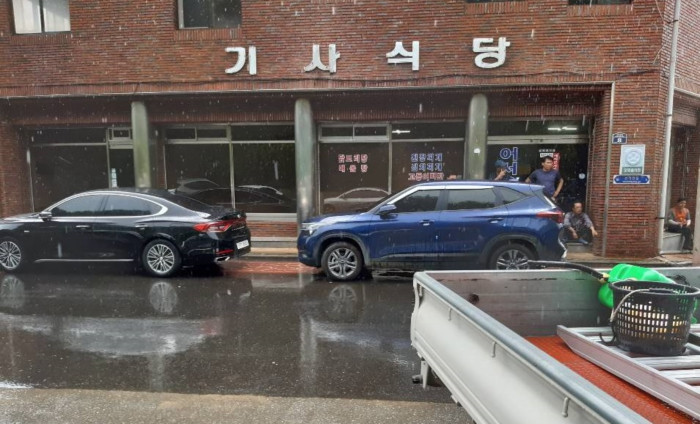
![Oryuheon House [Korea Quality] / 오류헌 [한국관광 품질인증/Korea Quality]](http://tong.visitkorea.or.kr/cms/resource/29/2706129_image2_1.jpg)
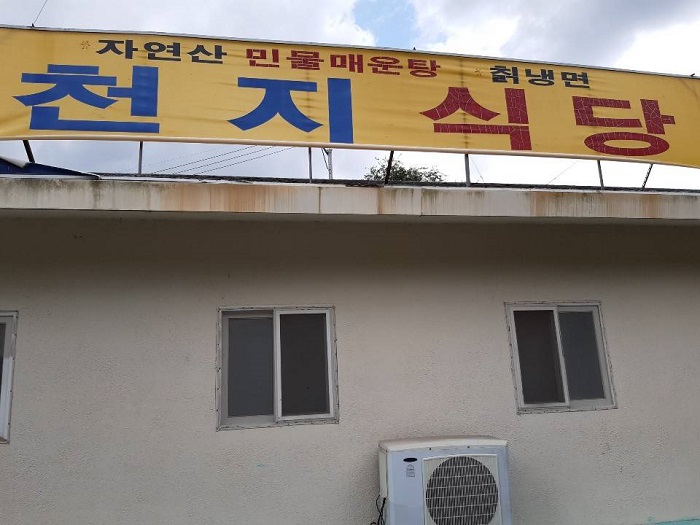
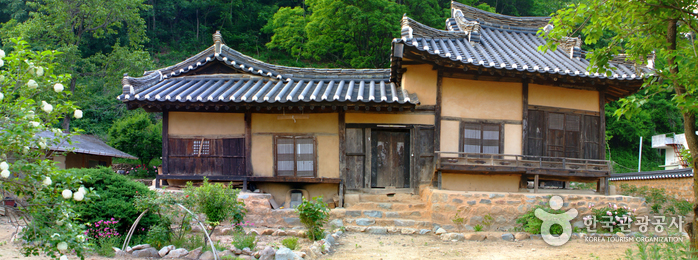
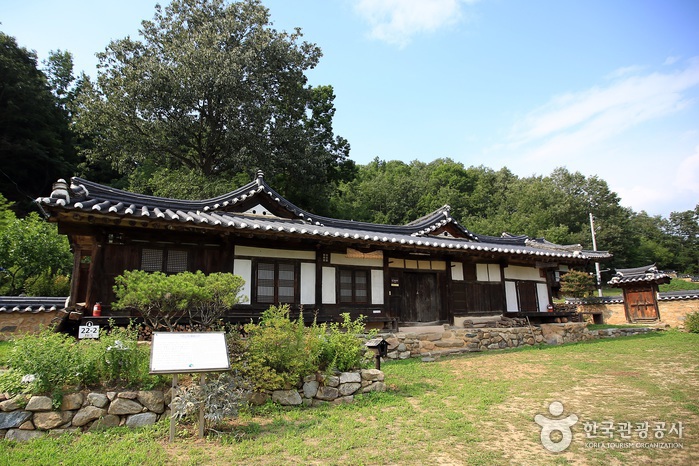
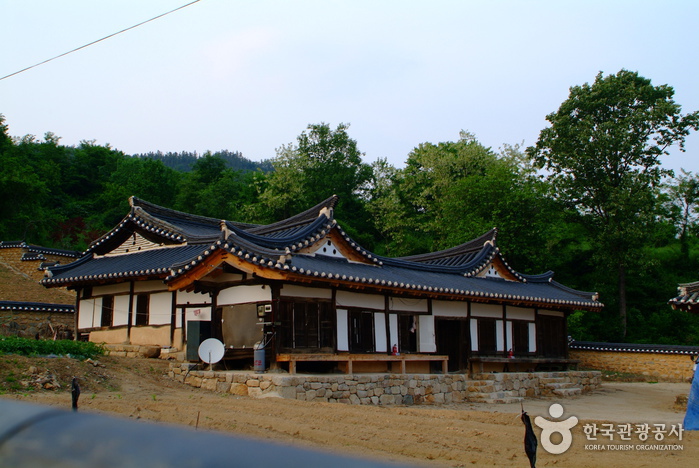
![Chalbanggong Head House [Korea Quality] / 찰방공종택 [한국관광 품질인증]](http://tong.visitkorea.or.kr/cms/resource/07/2528907_image2_1.jpg)
 Français
Français
 한국어
한국어 English
English 日本語
日本語 中文(简体)
中文(简体) Deutsch
Deutsch Español
Español Русский
Русский